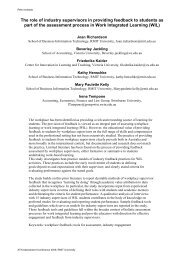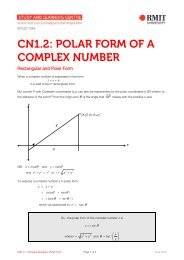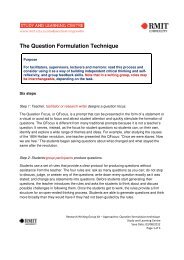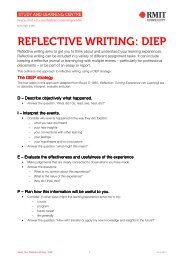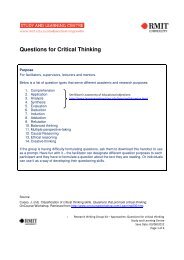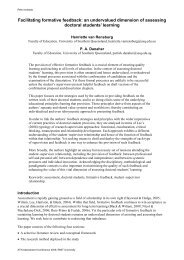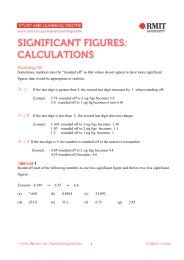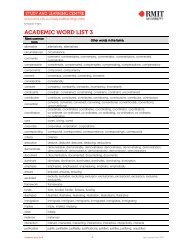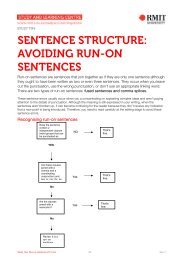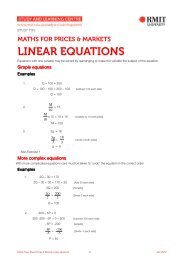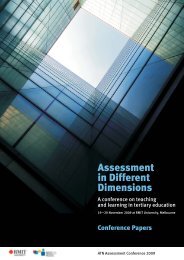student feedback and leadership - Office for Learning and Teaching
student feedback and leadership - Office for Learning and Teaching
student feedback and leadership - Office for Learning and Teaching
Create successful ePaper yourself
Turn your PDF publications into a flip-book with our unique Google optimized e-Paper software.
Part B: Building Leadership Capacity - BUS: School of Economics, Finance & Marketing ART Report<br />
that large lectures are increasingly resulting in <strong>student</strong> disengagement as<br />
<strong>student</strong>s are not challenged to think <strong>and</strong> participate (Cooper <strong>and</strong> Robinson,<br />
2000). The first crucial step in raising <strong>student</strong>s’ awareness of their own learning<br />
involves providing them with fast, accurate <strong>and</strong> individual <strong>feedback</strong> about<br />
their learning engagement in context (Meyer <strong>and</strong> Shanahan, 2004, p.446).<br />
First Semester 2008:<br />
An ‘audience response system’ trial using mobile phone technology was<br />
incorporated into two of the three lecture times held each week: one daytime<br />
class primarily consisting of full time <strong>student</strong>s <strong>and</strong> one evening class with<br />
mainly part time <strong>student</strong>s. Mobile phone technology was chosen over the<br />
conventional ‘clicker’ technology as the literature indicated that there were<br />
issues related to <strong>student</strong>s remembering to bring their clickers to class as well<br />
as the burden of the additional cost of purchasing a clicker. Mobile phones,<br />
on the other h<strong>and</strong>, are ubiquitous amongst <strong>student</strong>s <strong>and</strong> the access cost<br />
was estimated to be minimal (between 10 cents <strong>and</strong> $1 per class),<br />
depending on the package the <strong>student</strong>s had with their mobile provider.<br />
Participation in this trial was voluntary <strong>and</strong> commenced in week four of the<br />
semester. Prior to the lecture in which this initiative was launched, <strong>student</strong>s<br />
were required to pre-register their phone by logging on to a website after<br />
which they were sent an activation link <strong>and</strong> a bookmark to record the site<br />
location in their telephone web browser.<br />
Once <strong>student</strong>s were registered, the process worked as follows. After explaining<br />
a key concept in the lecture, the lecturer showed a slide with a multiple choice<br />
question designed to test <strong>student</strong>s’ deep underst<strong>and</strong>ing of the concept. For<br />
example, at the conclusion of a discussion relating to consumer behaviour<br />
<strong>and</strong> product strategy, the following question would be shown:<br />
Consumers buy Panadol tablets because they relieve their headaches faster<br />
than other headache tablets. What the consumer is really buying is called<br />
__________ :<br />
a. actual product<br />
b. core benefit<br />
c. augmented product<br />
d. convenience<br />
e. customer motivation<br />
Students were able to access a website via their mobile phones <strong>and</strong> enter their<br />
response to the question within the couple of minutes allowed <strong>for</strong> during the<br />
lecture. The lecturer was then able to display the results i.e. the number of<br />
<strong>student</strong>s that selected each option, <strong>and</strong> then in<strong>for</strong>m <strong>student</strong>s of the correct<br />
answer while explaining the rationale.<br />
Page 95



